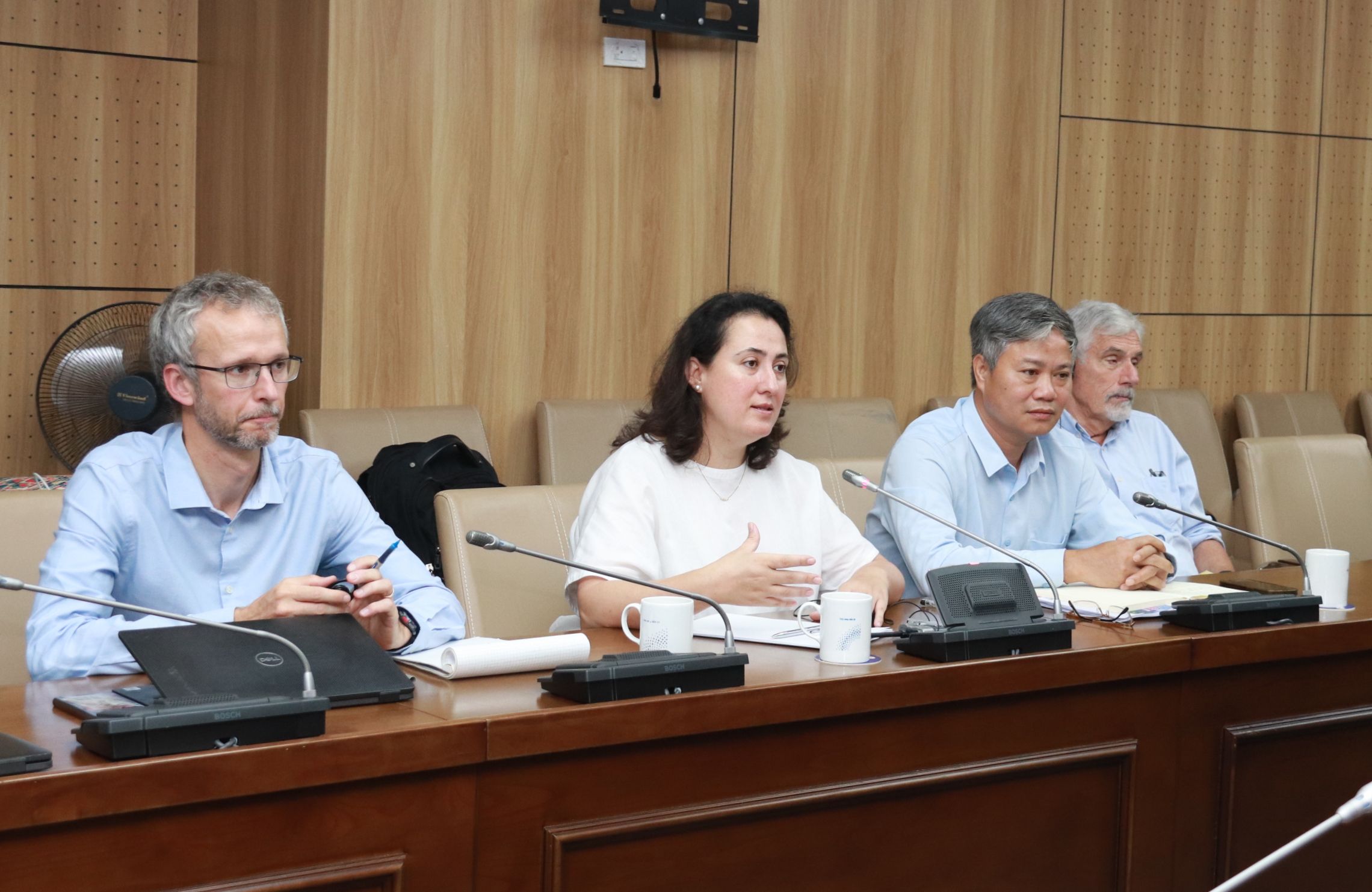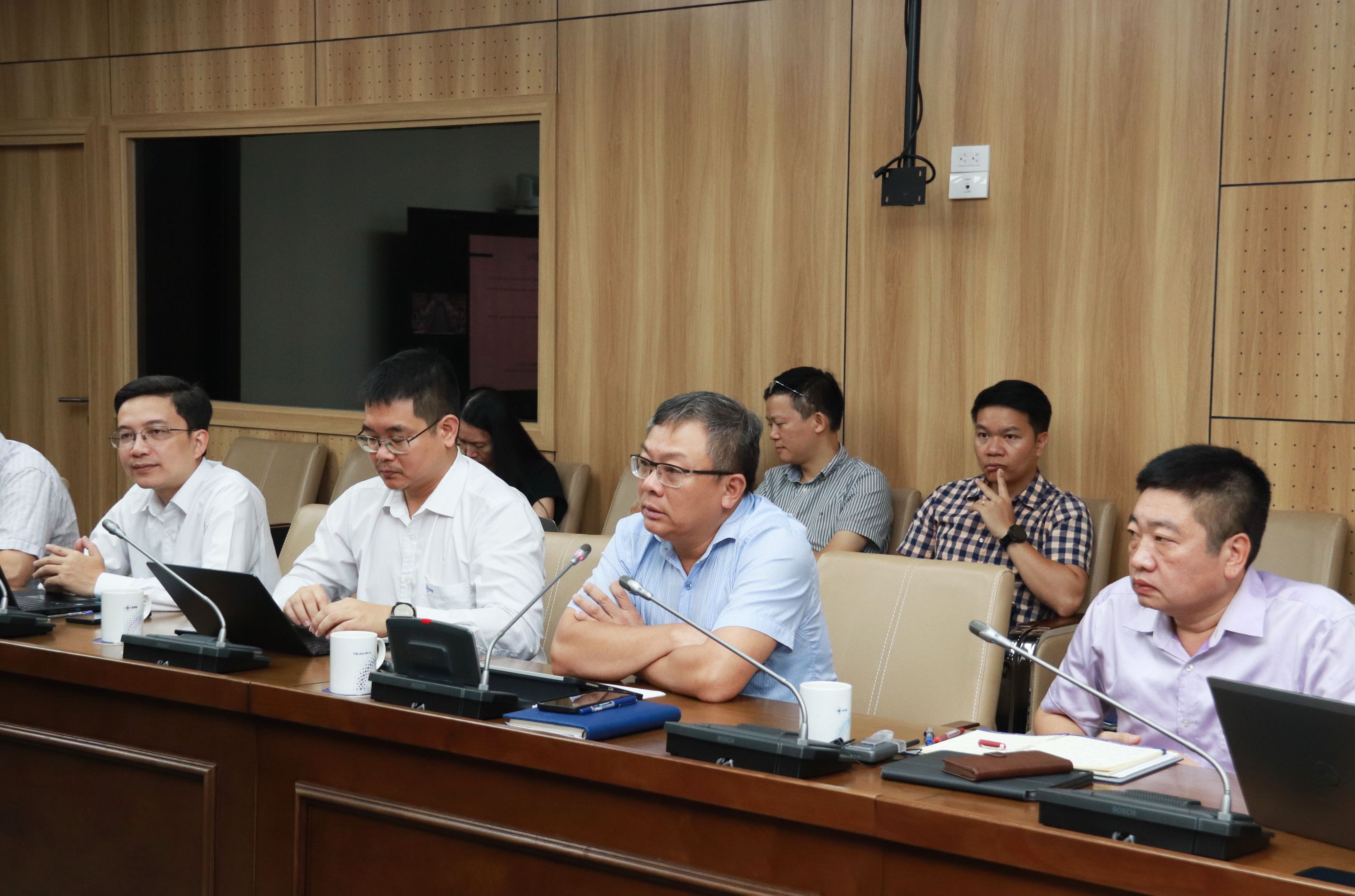Attending the meeting on behalf of the World Bank was Ms. Zayra Romo – Head of Infrastructure and Lead Energy Specialist, along with members of the WB delegation. Representing EVN was Mr. Pham Hong Phuong – EVN Vice President, joined by representatives from EVN’s specialized departments.

Ms. Zayra Romo – Head of Infrastructure and Lead Energy Specialist at WB speaks at meeting
At the meeting, WB experts expressed high appreciation for the construction quality and operational performance of EVN’s hydropower plants, stating they are on par with those in developed countries. “Our research indicates that EVN’s hydropower facilities are in excellent condition with very low technical, environmental, and social risks,” emphasized Ms. Zayra Romo.
The WB also shared its master plan for hydropower expansion in Vietnam, which includes assessments conducted at several EVN-managed hydropower plants. Based on this analysis, the WB proposed options for the expansion of existing EVN plants along with technical recommendations and considerations.
Regarding the potential for floating solar projects, the WB conducted site surveys at several hydropower reservoirs, including Ban Chat, Huoi Quang, Son La, Lai Chau, and Tuyen Quang. Using geographic, geological, and socioeconomic data, the WB experts outlined both the advantages and limitations of each site and presented viable recommendations for EVN’s consideration.
According to EVN Vice President Pham Hong Phuong, the WB report aligns well with EVN’s own research. He added that EVN has conducted thorough assessments on the potential for expanding existing hydropower plants, with a focus on three critical factors influencing investment approval:
1. The construction method and design of water conveyance tunnels;
2. Suitable siting and conditions for constructing water intakes;
3. Maximizing the use of existing infrastructure while avoiding encroachment on natural forests and impacts on local livelihoods.

EVN Vice President Pham Hong Phuong (front row, second from right) speaks at meeting
For floating solar development, the decisive factors for EVN include solar irradiance intensity and the number of sunshine hours per year. In addition, a comprehensive analysis of reservoir zoning, inland waterway planning, and local livelihood conditions is essential. Therefore, EVN leadership requested the WB to continue research and provide additional insights to support a complete and strategic investment planning process.
Vice President Pham Hong Phuong also expressed satisfaction with the program’s progress and affirmed that the WB’s report offers crucial insights for EVN. He emphasized EVN’s commitment to close cooperation to ensure the project’s success.
Ms. Zayra Romo of the WB reaffirmed the alignment of perspectives with EVN leadership and committed to maintaining regular information exchange and conducting further studies to support the final report.
Translator: Mỹ Linh
Share